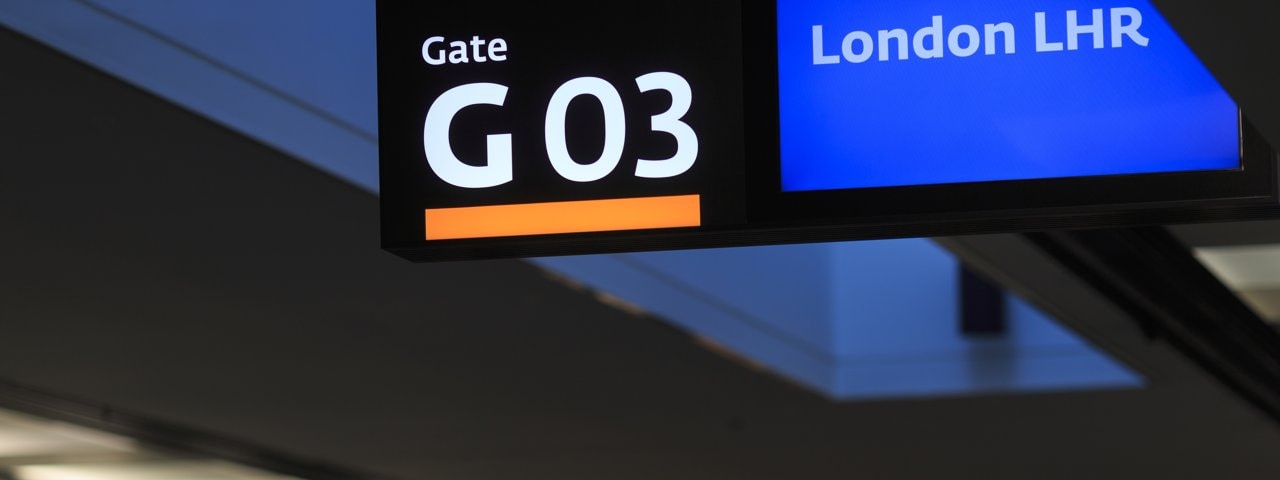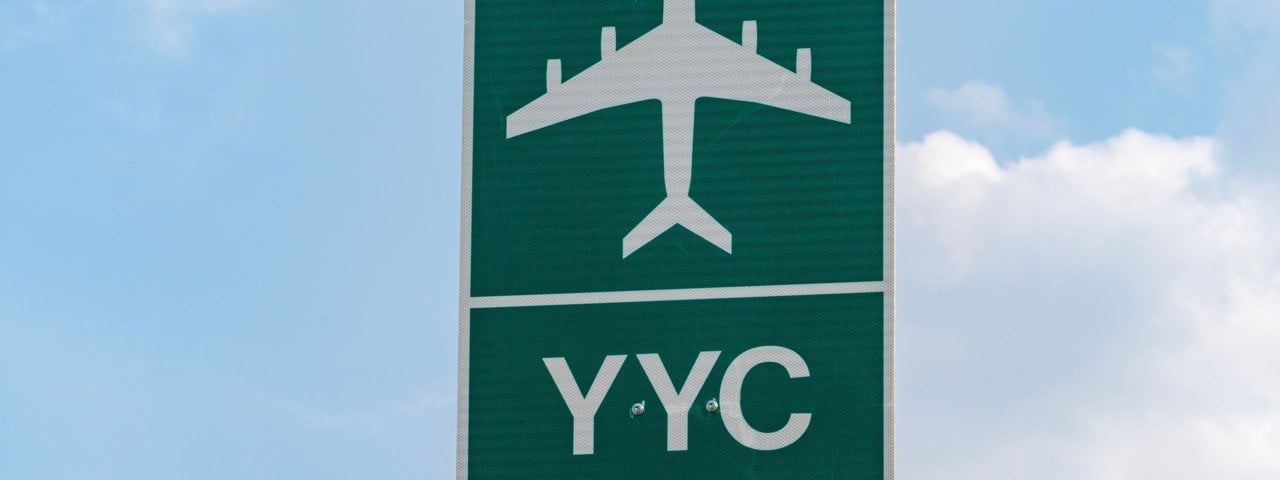Getting to Know the Codes Behind Airports
How does anyone know how to quickly and easily identify a particular airport? From MAD to LAX, airport code systems help travellers and pilots tell the difference between airports all around the world.
With more than 41,000 airports around the world, there’s no doubt of the importance of having a systemised approach to airport identification. This is where the four and three-letter airport codes come in. Let’s learn more about airport codes, their history and importance, as well as take a look at a few interesting examples.
De-coding ICAO and IATA codes
If you’re planning on taking a private jet charter and notice a strange airport code, don’t worry. While some airport codes make complete sense, others are a bit more unusual. But how do airports get these codes?
There are two entities responsible for allocating codes to airports. The first one is the International Civil Aviation Organization (ICAO), which assigns four-letter codes to public and private airports. It’s mostly for official use, such as air traffic control, flight plans, and airline identification. In most cases, the first letter of the ICAO airport code indicates the region, and the second letter refers to the country. The remaining two letters are assigned to a specific airport.
The second entity is the International Air Transport Association (IATA), the trade association of the world’s airlines. Mainly used for commercial purposes, the three-letter IATA airport codes can be found on plane tickets, boarding passes, baggage tags, and domestic flight numbers. Due to the three-letter character limit, not all IATA codes are unique, so there are some instances where two airports could have the same code. The last three letters of an ICAO code can sometimes be the same as the IATA code, but it’s not always the case.
Whether travelling on a passenger aircraft or a private charter, these are the two different airport codes you’ll see used the world over. However, the code that you will likely witness the most is the three-letter IATA code. This is because it’s often listed alongside airports in online searches or on your baggage tags when you fly commercial, for example.
History of airports and their codes
Over the past century, there have been impressive innovations within the aviation industry that have made air travel more accessible than ever before. Even private plane rental is easily accessible, having gained popularity since the 1960s when private planes were first commercialised. But with air travel’s growing popularity, so has the need for good airports. Let’s take a brief look at the history of airports and the introduction of airport codes.
Although the oldest airport is often disputed, it’s generally agreed that the acclaim goes to College Park Airport (IATA code: CGS) in the US state of Maryland, which was established in 1909. The second oldest airport is Beijing Nanyuan Airport (NAY) in China, which opened in 1910. Since these pioneering pieces of air travel infrastructure were established, the number of airports has grown to more than 41,000 airports distributed around the globe. Naturally, an airport coding system had to be established to keep track of flights and airport control.
The first coding system for airports was introduced in the 1930s. This system worked using two-letter codes chosen by the airport. However, with the astonishing rise of modern aviation and the growing number of airports globally, the two-letter coding system simply wasn’t enough, resulting in a shift to a three-letter code by the late 1940s. By the 1960s, IATA took control of these codes by introducing the standardised system we still use today.
Why are airport codes necessary in the aviation industry?
IATA airport codes are the backbone of modern aviation. Essential to the smooth running of electronic airport applications, these codes help to identify airlines (IATA uses a two letter coding system while ICAO uses a three letter coding system specifically for airlines), their destinations, and other relevant traffic information. These codes are also used to identify passenger destinations on passenger documentation, such as tickets and luggage tags, allowing airport staff to easily identify where a passenger and their luggage should be going.
How airports get their IATA code
The allocation of IATA codes is predominantly focused on two things: firstly, how the airport wants to be identified, and secondly, the availability of a three-character combination. IATA issues the codes after an application process is completed.
If you live in Canada or have flown there, you may have noticed that Canada’s IATA codes are a little bit different from other places.
‘Y’ are Canada’s airport codes different?
Interestingly, most Canadian codes begin with the letter Y. While it’s not a requirement that the first letter should be country-specific, many people still wonder why Canada implemented this system.
Back in the 1930s when the aviation industry used two-letter identifiers, it was crucial to know whether airports had a weather or radio station. If it had one, the letter Y was added in front of their existing two-letter airport code. By the time the three-letter code was introduced in the 1940s, it was decided that most Canadian airports would continue using the Y prefix, so that’s why we have YVR for Vancouver International Airport, YYZ for Toronto Pearson, and YZU for London International.
While Canada may be known for its airport codes starting with the letter Y, there are airports outside of the country that also use the letter Y at the start of their airport codes. Here are a few examples:
- YAI – General Bernardo O'Higgins Airport in Chillán, Chile
- YAK – Yakutat Airport in Yakutat, Alaska
- YAN – Yangambi Airport in Yangambi, Congo
- YAO – Yaoundé Airport in Yaoundé, Cameroon
- YEO – Royal Naval Air Station Yeovilton in Yeovilton, United Kingdom
Well-known and unusual world airport codes
While some codes match their airport perfectly, others do not correlate with the airport name. This can sometimes be confusing if it’s the first time you’re travelling to that destination.
On the other hand, several IATA codes have played a significant role in their cities’ identities. For instance, the code for St Pete-Clearwater International in Tampa Bay, Florida, is PIE. The airport’s website is branded “Fly2pie”, which has proved a successful marketing strategy because visitors can easily remember the location.
Here are some well-known airport codes further afield that bear a resemblance to their names:
- AMS – Amsterdam Airport Schiphol, Netherlands
- MAD – Adolfo Suárez Madrid-Barajas Airport, Spain
- LHR – Heathrow Airport, near London, UK
- LAX – Los Angeles International Airport, USA
- FRA – Frankfurt International Airport, Germany
- HKG – Hong Kong International Airport, Hong Kong
- SYD – Sydney Airport, Australia
- JFK – John F. Kennedy International Airport, New York, USA
And then there are some rather unusual airport codes:
- ECP – Northwest Florida Beaches International Airport, in Panama City, Florida, USA. (This spring-break location’s acronym can be taken to mean "Everyone Can Party")
- FAT – Fresno Yosemite International Airport, California, USA
- SUX – Sioux Gateway Airport, Iowa, USA
- LOL – Derby Field, Lovelock, Nevada USA
- PEE – Perm International Airport, Russia
- BAD – Barksdale Air Force Base, Bossier City, Louisiana, USA
Many beautiful travel destinations have lesser-known codes. Don’t get confused when you need to take a private air charter to Bodø Airport in Norway, and you see BOO on your boarding pass! And, you’ll most certainly be enjoying a fab flight while travelling to the UK’s premier business aviation airport, Farnborough Airport, since FAB is the airport code.
One thing’s for sure: when you arrive at your airport destination of choice, the airport code plays an important role in getting you there.
Book your next private jet charter with Air Charter Service
With more than 30 years of experience, as well as access to more than 50,000 aircraft across the globe, we’re ideally positioned to provide unrivalled private jet charter solutions.
Contact us for more information or to obtain a private jet quote.

 How does anyone know how to quickly and easily identify a particular airport? From MAD to LAX, airport code systems help travellers and pilots tell the difference between airports all around the world.
How does anyone know how to quickly and easily identify a particular airport? From MAD to LAX, airport code systems help travellers and pilots tell the difference between airports all around the world.




